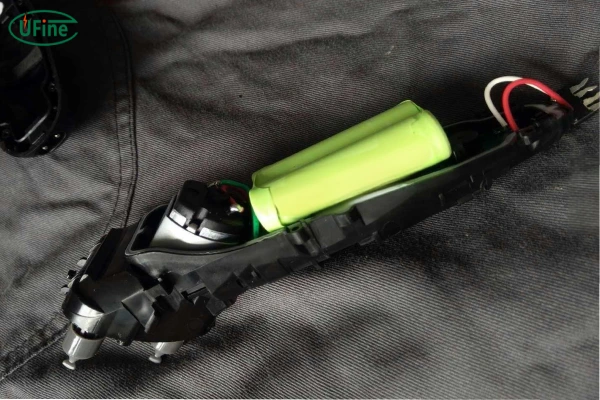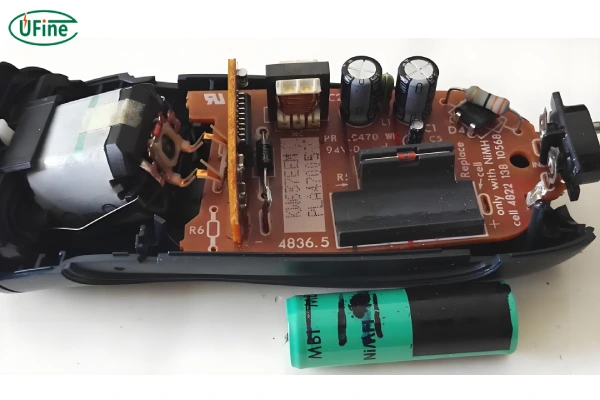Regarding personal care products, few items are more necessary than a hair clipper. Whether you want to be completely clean-shaven or just need a quick touch-up, this trusty tool is always there.
Like any other machine, though, its durability and performance heavily rely on how much effort you put into keeping it maintained; not only does this include initial quality but also things like battery life management, which often gets ignored until halfway through trimming someone’s head or beard when the clippers suddenly die out.
But don’t worry because here we have all the answers – inside these pages lies an authoritative manual that will ensure your hair clipper never runs out of power again. With professional advice about charging techniques and smart methods for extending battery life expectancy, follow our path towards mastering clipper care. Not only will you save time during grooming routines, but you will also improve efficiency while making them more reliable.

Part 1. Hair clipper batteries: li-ion batteries or NiMH batteries.
Hair-clipper batteries are usually one or more cells that produce electrical energy from chemical energy. Clippers commonly use Lithium-ion (Li-ion) batteries or Nickel-metal hydride (NiMH) batteries.
Lithium-Ion Batteries
Incredibly lightweight and with a high energy density, these types do not self-discharge quickly. They are known for their long-lasting performance, so they are often used in new wireless hair trimmers. Additionally, lithium-ion batteries have flat discharge curves that maintain constant power until very near depletion.
Nickel-Metal Hydride Batteries
This kind is also popular among hair clipper manufacturers. Although they have less energy per unit volume when compared to lithium-ion ones, NiMHs have a better environmental impact and are free of memory effects.
Part 2. Features of hair clipper batteries
The batteries in hair clippers serve as their main power source, making it possible for one to move around without worrying about being tied up to a power outlet. Users can have better performance from them and extend their lives by understanding how they run.
1. Charging and Discharging
When a battery of hair clippers is connected to a charger, electrical energy is supplied to the battery, causing ions to move from one electrode to another within the battery cells. This process of storing energy by charging is called. The stored energy within the battery is discharged during use, providing power for the clipper’s motor.
2. Capacity and Runtime
Capacity refers mostly to the energy quantity a hair clipper battery can store in milliampere-hours (mAh). Longer runtime between charges is brought about when you have higher capacity batteries, so you can do grooming all at once. Knowing the capacity of your clipper’s battery will help you manage your grooming regularly.
3. Maintenance and Care
Maintaining the proper functioning and long life of the hair clipper battery is necessary. Regular cleaning should be done for the removal of hairs and debris, while overcharging must be avoided so as not to damage them, alongside storing clippers.
Part 3. Hair clipper batteries types
Hair clippers utilize two main types of batteries:
Rechargeable and throwaway. Rechargeable batteries can be used repeatedly, and they are cordless and convenient to use. Disposable or primary cells, on the other hand, can only be used once and then replaced after they are exhausted or depleted. Each type has its pluses
Part 4. How to extend the life of hair clipper batteries?
Maximizing the lifespan of your clipper’s battery needs some proactive maintenance and usage. The following additional tips will help you have a better-performing battery for long periods:
1. Avoid Deep Discharge
Deep discharges can strain the battery, resulting in a shorter lifespan. Refill your clipper before it goes too low to ensure that its well-being is maintained.
2. Optimize Charging Cycles
Partial charging cycles should be avoided as they may lead to battery memory effects. Instead, let the battery fully discharge and then recharge for optimal performance.
3. Monitor Battery Health
Observe the runtime and charging patterns of your battery. Act swiftly if any anomalies are detected to prevent further deterioration.
4. Invest in Quality Batteries
While replacing your hair clipper’s batteries, consider using high-quality OEM ones since they are compatible and offer good performance.
5. Follow Manufacturer Guidelines
Always refer to the manufacturer’s instructions on how to take care of and maintain the batteries properly. This way, you can prolong their lives by far.
Part 5. Troubleshooting common battery issues
Even if you maintain your hair clipper battery properly, its battery power might sometimes have issues that could interrupt your grooming process. A quick identification and resolution of these typical problems can return the performance of your blade cutter to normalcy while extending the life of its accumulator.
If you notice a significant reduction in the runtime of your clipper, it could mean something is wrong with the battery. Clean the battery contacts to ensure good contact between the battery and the clipper. If this doesn’t work, replacing the battery with a new one should help restore optimal performance.
Overheating can occur due to prolonged use and lack of proper ventilation. In case, during operation, your clipper feels excessively hot, then let it cool before using it again. Look for debris blocking air vents and prevent overheating by ensuring sufficient airflow. If this doesn’tdoesn’t work, seek professional assistance because it’s likely that a deeper examination will be required to fix it.
But before anything else, if your battery isn’t charging properly, check whether there are any faults with the charger or power source itself. See to it that the charger matches up with the clipper’s battery and the power source is operating well. However, after doing this, if your battery still does not charge, clean off the contacts and place them back into clipper batteries lest try replacing the charger; otherwise, consult for expert intervention.
Part 6. Final thoughts
To sum up, it is important to keep your hair clipper battery lasting longer to shave continuously. You will always have clippers ready by understanding different types of batteries, doing good maintenance practices, and solving simple problems. Consider following manufacturers ‘ recommendations, buying genuine batteries, and keeping tabs on battery performance regularly for maximum efficiency and life expectancy.
Related Tags:
More Articles

LiPo Battery Discharge Rate Guide & Calculation Tips
Understand LiPo battery discharge rates, C-ratings, and how to calculate max current. Essential guide for RC, drones, and electronics users.
High‑Capacity 3S LiPo Batteries: 5000 mAh vs. 10000 mAh
Compare 3S LiPo 5000mAh vs 10000mAh batteries by weight, power, and use. Find the best fit for your drone, RC car, or boat setup.
Top 5 Applications for Small 3S LiPo Batteries
Small 3S LiPo batteries power drones, RC gear, wearables, and robotics with high energy and low weight. Making them ideal for compact electronics projects.
Building and Charging Your Own 3S LiPo Pack: A Step‑by‑Step Guide
Learn how to build, balance, and charge a 3S LiPo battery pack safely at home with this complete DIY guide for hobbyists and beginners.
How to Choose the Right LiPo Battery Plug Type?
Discover the best LiPo battery plug types, how to choose them, and expert tips for safe usage, soldering, and maintenance.




